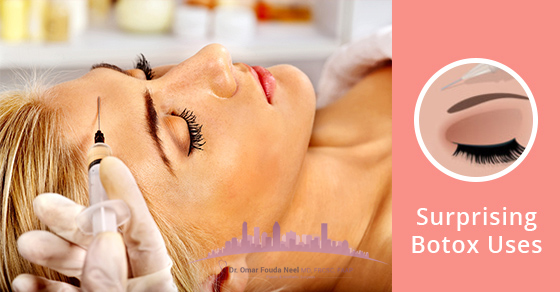Four Surprising Uses for Botox
The current darling of the cosmetic industry, Botox, has a surprising number of uses for a substance that’s widely considered solely cosmetic by the public.

Made from a neurotoxin, cosmetic Botox is harmless to the human body and can be used to treat a surprising number of medical conditions in addition to its cosmetic uses. There are even studies that show it may have a significant role to play in the treatment of chronic depression.
For those unaware of the various clinical uses of Botox, we’ve compiled a list of the four most common:
- Urinary Incontinence
- Hyperhidrosis
- Blepharospasm
- Temporomandibular Joint Disorder
Caused by a neurological condition, urinary incontinence can be an embarrassing and difficult problem for many people.
Typically occurring due to a loss of communication between the bladder and the brain (often as a result of injury to the spinal cord or medical conditions such as multiple sclerosis), this causes the muscles in the bladder to contract and often results in involuntary leakage.
Botox injections targeting the bladder muscles can help to control and prevent these involuntary spasms, preventing leakage and allowing patients to live more comfortable lives.
A medical condition that results in excessive sweating in the underarm area with or without the normal triggers or stress or physical exertion, hyperhidrosis is another potentially embarrassing condition that can have a significant impact on the mental health of patients. Luckily a simple injection of Botox into the skin of the underarm can help to reduce sweating for up to six months.
This condition causes involuntarily clenching and blinking of the eyes, and can progress to the point that it becomes a serious problem that greatly impacts the patient’s ability to perform everyday tasks. In severe cases, patients have been known to lose the ability to open their eyes at all.
Botox is the oldest FDA approved treatment for this condition. Injected into the muscles around the eyes, it helps to lessen the involuntary contractions so patients can regain their eyesight and control of their lives.
Also known as TMJ disorder, this condition affects the muscles of the jaw causing clenching and grinding of the teeth. While mouth guards can be employed to prevent damage to the teeth, they do little to ease the pain and tension caused by the tight muscles.
In fact, one of the few effective treatments available to patients suffering from this condition are Botox injections, which help to prevent involuntary contractions, lessening tension and preventing the headaches and upper back pain that it can cause.














